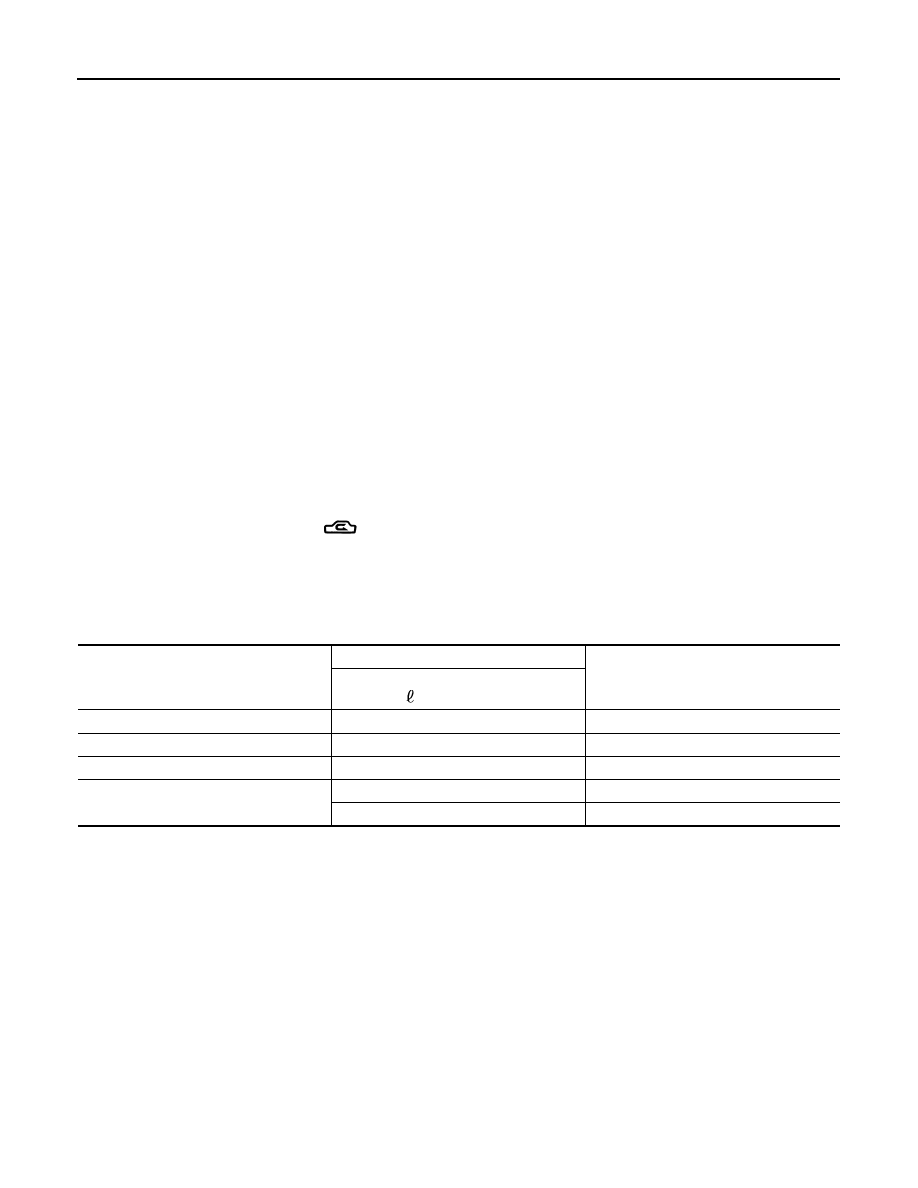Nissan Frontier. Manual - part 856

HA-16
< PERIODIC MAINTENANCE >
OIL
OIL
Maintenance of Oil Quantity in Compressor
INFOID:0000000009478581
The oil in the compressor circulates through the system with the refrigerant. Add oil to compressor when
replacing any component or after a large refrigerant leakage has occurred. It is important to maintain the spec-
ified amount.
If oil quantity is not maintained properly, the following malfunctions may result:
• Lack of oil: May lead to a seized compressor
• Excessive oil: Inadequate cooling (thermal exchange interference)
OIL
Name: NISSAN A/C System Oil Type R or equivalent
CHECKING AND ADJUSTING
CAUTION:
• The use of any other refrigerant or oil will cause severe damage to the air conditioning system and
will require the replacement of all air conditioner system components.
• If excessive oil leakage is noted, do not perform the oil return operation.
Start the engine and set the following conditions:
Test Condition
• Engine speed: Idling to 1,200 rpm
• A/C switch: On
• Blower fan speed: Max. position
• Temp. control: Optional [Set so that intake air temperature is 25
° to 30° C (77° to 86°F)]
• Intake position: Recirculation (
)
• Perform oil return operation for about ten minutes
Adjust the oil quantity according to the following table.
Oil Adjusting Procedure for Components Replacement Except Compressor
After replacing any of the following major components, add the correct amount of oil to the system.
Amount of Oil to be Added
*1: If refrigerant leak is small, no addition of oil is needed.
Oil Adjustment Procedure for Compressor Replacement
Part replaced
Oil to be added to system
Remarks
Amount of oil
m (US fl oz, Imp fl oz)
Evaporator
75 (2.5, 2.6)
—
Condenser
75 (2.5, 2.6)
—
Liquid tank
5 (0.2, 0.2)
Add if compressor is not replaced.
In case of refrigerant leak
30 (1.0, 1.1)
Large leak
—
Small leak *1